This is by far the simplest and easiest “no work” gardening method. You plant directly into bales of straw, and as the season progresses, the straw is broken down into virgin soil that nourishes the plants from inside the bale.
Hay bale gardening is just what you’re looking for: It’s cheap, it’s easy, and there is no need for fertilizers or pesticides.
What are the advantages of hay bale gardening?
Hay bale gardening is great, and here are some of the reasons why:
- It works for any kind of soil. The type of soil is not exactly the most important criteria one will take into consideration upon choosing their safe place, yet it’s usually essential to have a good soil in order to grow a garden. Well, not with this type of gardening. You can live on the rocky top of the highest mountain and still grow your own tomatoes!
- It’s organic. You don’t need pesticides to grow a bale garden. Your crops are naturally protected against weeds and harmful insects.
- It’s low maintenance. No more digging and weeding!
- It’s cheap. Both straw and hay bales are inexpensive.
- It doesn’t use many resources, it doesn’t need much water, and the workload is also much smaller than normal!
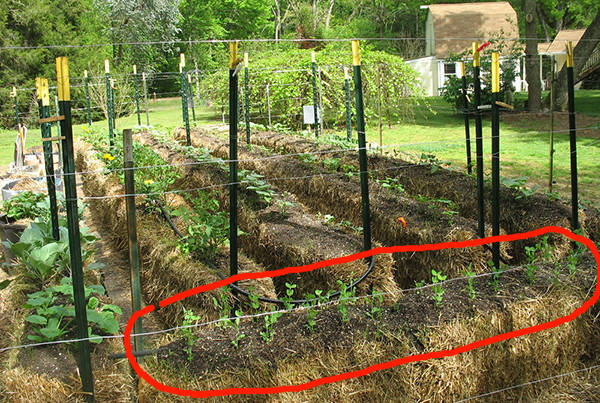
Straw or hay?
Actually, both methods have advantages and disadvantages. Straw bales are usually cheaper than hay bales. On the other hand, hay seems to generate a more nutritious compost than straw. Also, hay is said to hold more water than straw. But hay bales often contain many seeds, which can cause trouble if they resist the relatively high temperatures generated during the conditioning process.
What type of straw/hay?
Experienced gardeners who have been using this method for a while state that wheat, oats, rye, and barley straw are the most suitable for growing a garden. This is because these plants are harvested for grains, which means there will be practically no seeds left in the straw bale. If you’re into hay bales, choose pea, vetch, or alfalfa.
It’s cost effective to use the resource that is available in your area, but if you have the opportunity to choose, you should avoid corn and flax bales; they take longer to decompose because they are very coarse and due to the oil residue left in the linseed straw.
How do you make your garden?
Keep in mind that the bales are almost impossible to move once the gardening process actually begins, so make sure they are placed in the proper place. Once you have decided where to put them, lay down galvanized wire bird netting. This will keep away rats and digging moles.
Make sure to purchase bales that are tied with plastic or wire twine. A degradable twine will be soon damaged and useless.
Arrange the bales so the straw stalks are horizontal. This will help keep more water inside the bale. If you put them vertically, the water will just run through. However, I need to admit that planting is easier with vertical straw, so it’s up to you to decide what’s the best way for you.
Once the bales are in place, it’s time to begin the first phase of starting the garden. It’s called conditioning the bales.
Soak them with plenty of water, and make sure they don’t dry at all during the next five days while the temperature rises and they start rotting inside.
Once the five days have passed, you can start planting in about one to two weeks.
You can choose to speed this up by using ammonium nitrate, which is high in nitrogen and promotes bacterial growth, the same bacteria that are involved in rotting the straw. In that case, the bales should be watered 10 days in a row: days 1, 3, 5, 7, and 9 using the ammonium nitrate and days 2, 4, 6, 8, and 10 with plain water.
As you are surely interested in growing a healthy garden, you can find a more natural way to speed up the rotting process. One way is to spread a layer of organic fertilizer on the bales right before starting the watering process. Chicken, turkey, or rabbit manure and even coffee grounds are great organic fertilizers.
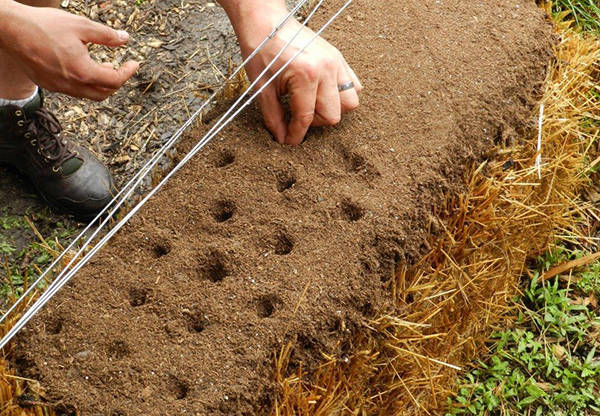
Once the conditioning process is over, you will simply plant the seeds, germinated seeds, or small plants inside the bales. Make sure that the temperature inside is adequate; otherwise, it may harm your plants. It’s okay if it’s a little bit warmer than the exterior as this will improve root growing.
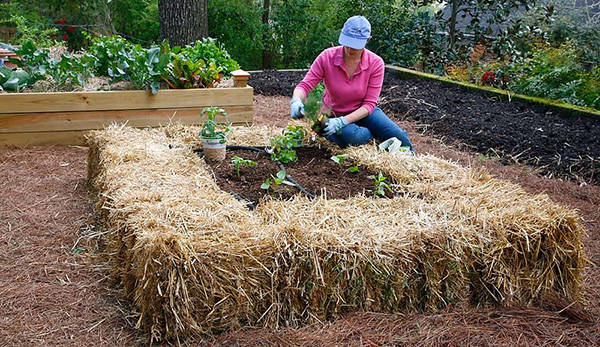
What are the appropriate plants for your bale garden?
You can grow pretty much anything on your bale garden. All annual vegetables and herbs will love it; however, I wouldn’t go for very heavy plants, such as corn. You can successfully grow tomatoes, cucumbers, peppers, squash, zucchini, melons, beans and peas, leafy vegetables, eggplants, and pretty much anything else you can think of.
Here’s a video that shows you how to get started:
You may also like:
Post Apocalypse Gardening: Living From a Small Piece of Land in Tough Conditions
H2O Dynamo – The Awesome Device That Turns Air Into Water (video)
This Common Driveway Weed is One of Nature’s Most Powerful Survival Plants

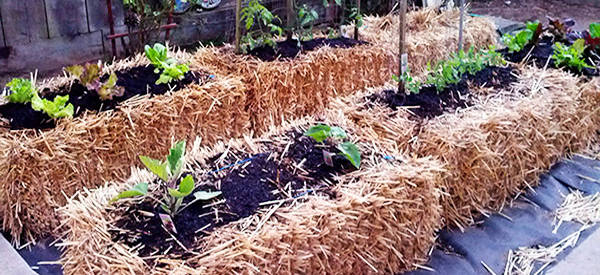
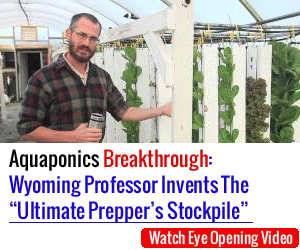













Hi,
looks very nice attractive and much easier to handle. But where do you find bales that have not been poisoned with PCBs, Roundup and other herbicides, fungicides…
Regards,
Blemsta
Oat straw is fairly clean. There are no “round up ready” oat seeds because oats grow well no matter what.
We use oat straw for bedding for our animals, using the deep bedding method. In the Spring, we clear out the barn and chicken house, moving all that lovely, mostly composted straw out to the garden.
Just starting to learn.
‘
Any one know a good spot to get some in Fort Worth Texas? Feel free to e-mail me or shoot me yahoo messenger.
Check with your local feed store. Most carry both hay and straw.
If you are interested in straw bale gardening, please read the article here;
http://thegrownetwork.com/hidden-dangers-straw-bale-gardening/
Know before you grow!!!
Thanks for this information on Hay and straw gardening. Am sharing with other family members.
This sounds like a challenge, especially in urban and suburban areas.
Raised bed gardening (use cinderblocks or 1×6’s for the side, cardboard for the bottom, and use a variant of Mel’s Mix) might be easier, at least in terms of getting the materials to make the garden.
I know I’m four years late in this thread, but I was just following links.